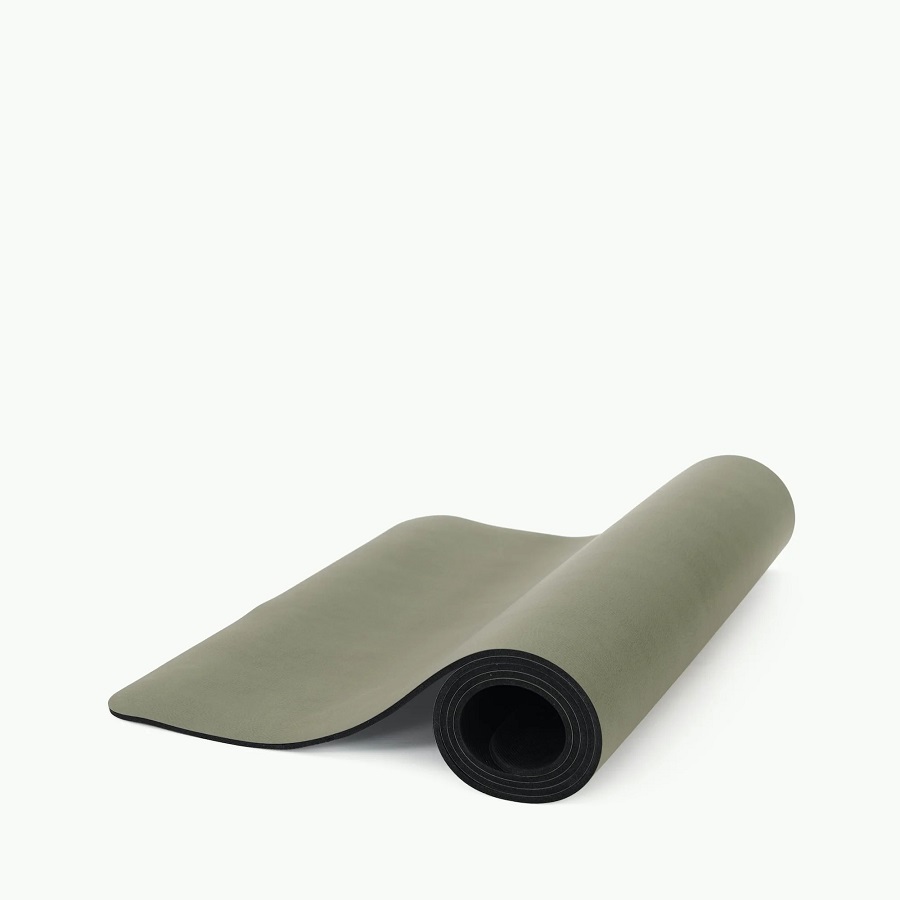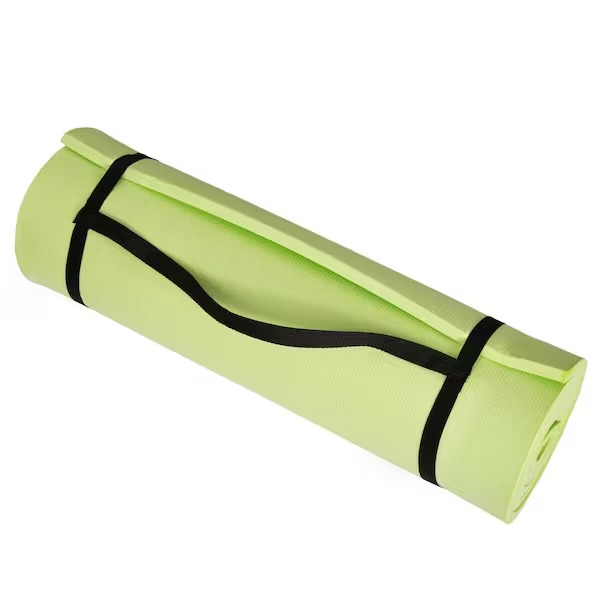Introduction to Yoga Mat Lifespan
How often replace yoga mat? Your yoga mat is key to a solid practice. Think of it as the foundation that supports you through every pose and transition. But like all things, mats don’t last forever. They’re subject to wear, tear, and hygiene issues that can affect their performance. Knowing when to upgrade can help you maintain a safe and comfy practice. It’s not just comfort at stake; it’s also about safety.
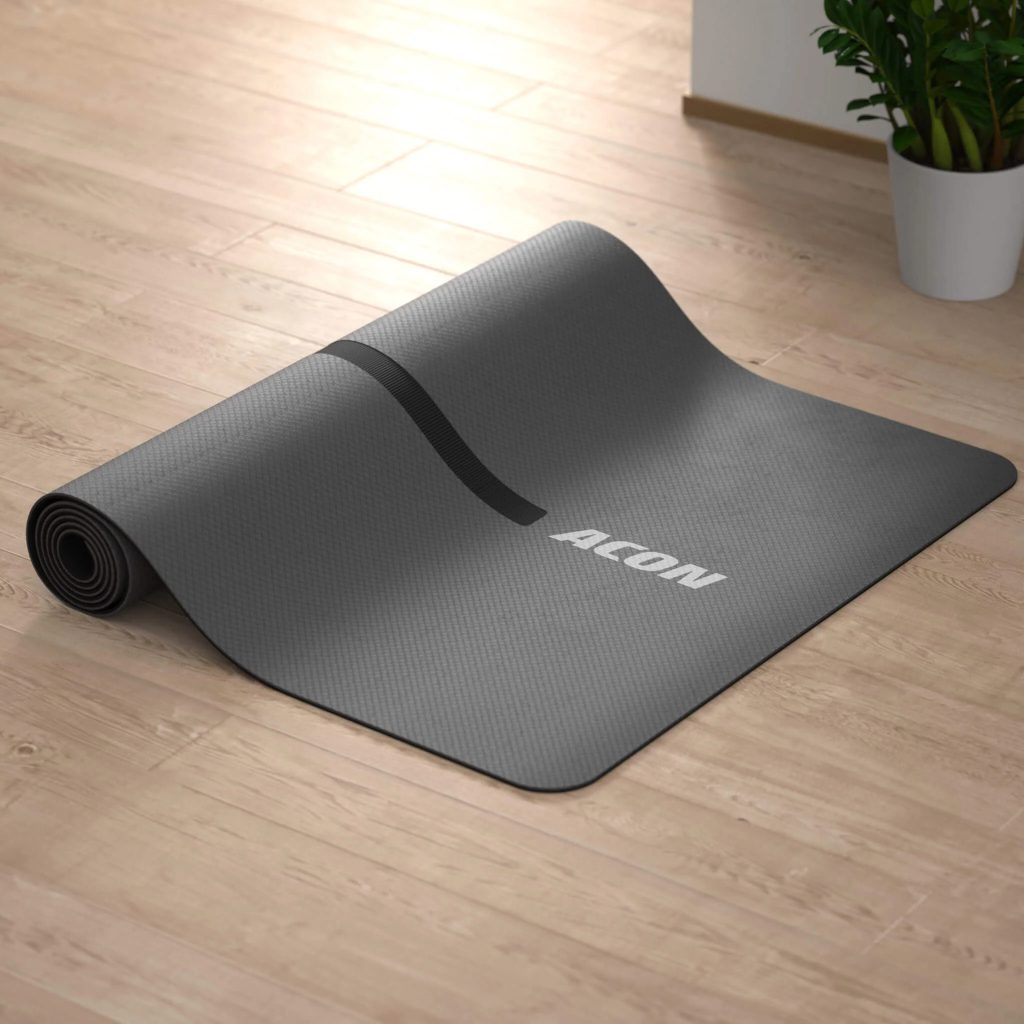
Recognizing Signs of Wear and Tear
Recognizing the signs of wear and tear on your yoga mat is essential for your safety and comfort during practice. It’s important to keep a close eye on your mat’s condition to determine when it’s time for a replacement. Here are some critical indicators to watch for:
- Visible Damage: Check for any visible rough patches, tears, or splits. These flaws can weaken the mat and pose a risk during your sessions.
- Texture Changes: If the surface feels worn down or less grippy, the mat won’t provide the stability you need to hold poses safely.
- Cushioning Loss: A once-thick mat that now feels thin indicates worn-out cushioning. This can be tough on your joints and make floor work uncomfortable.
- Persistent Smells: When no amount of cleaning gets rid of odors, it could be due to bacteria deep in the mat’s material. It’s better to start fresh with a new mat.
When you spot these signs, it’s time to consider shopping for a new yoga mat to maintain an effective and enjoyable yoga experience.
The Importance of Grip and Stability
Ensuring your yoga mat has proper grip is crucial. It prevents slipping and stabilizes your poses. As yoga mats wear, grip lessens, increasing slip risks. This compromises practice safety and effectiveness. Stability in your mat means higher confidence and fewer distractions during practice. Replacing your mat when grip fades is pivotal for maintaining a safe, effective yoga routine.
Understanding Hygiene Issues: Odor and Bacteria
Maintaining a clean and odor-free yoga mat is as important as the physical practice itself. Over time, yoga mats can become breeding grounds for bacteria, which can lead to hygiene issues and foul odors. Here’s what you need to know about the hygiene of your yoga mat and when to replace it due to odor and bacteria:
- Bacteria Build-Up: A well-used yoga mat can collect sweat, skin cells, and other organic material, which bacteria love. If your mat smells bad even after cleaning, it’s time for a new one.
- Deep Clean Difficulty: Sometimes, you just can’t get your mat completely clean. When deep cleans stop working, and the smell persists, it’s a health risk. Opt for a fresh mat.
- Material Matters: Mats made of porous materials like rubber can absorb more moisture and bacteria. They may need replacing more often than those of non-porous materials.
- Routine Cleaning: Keep up with regular mat cleanings to fight bacteria. But if odors don’t go away, your mat could be saying it’s time to move on.
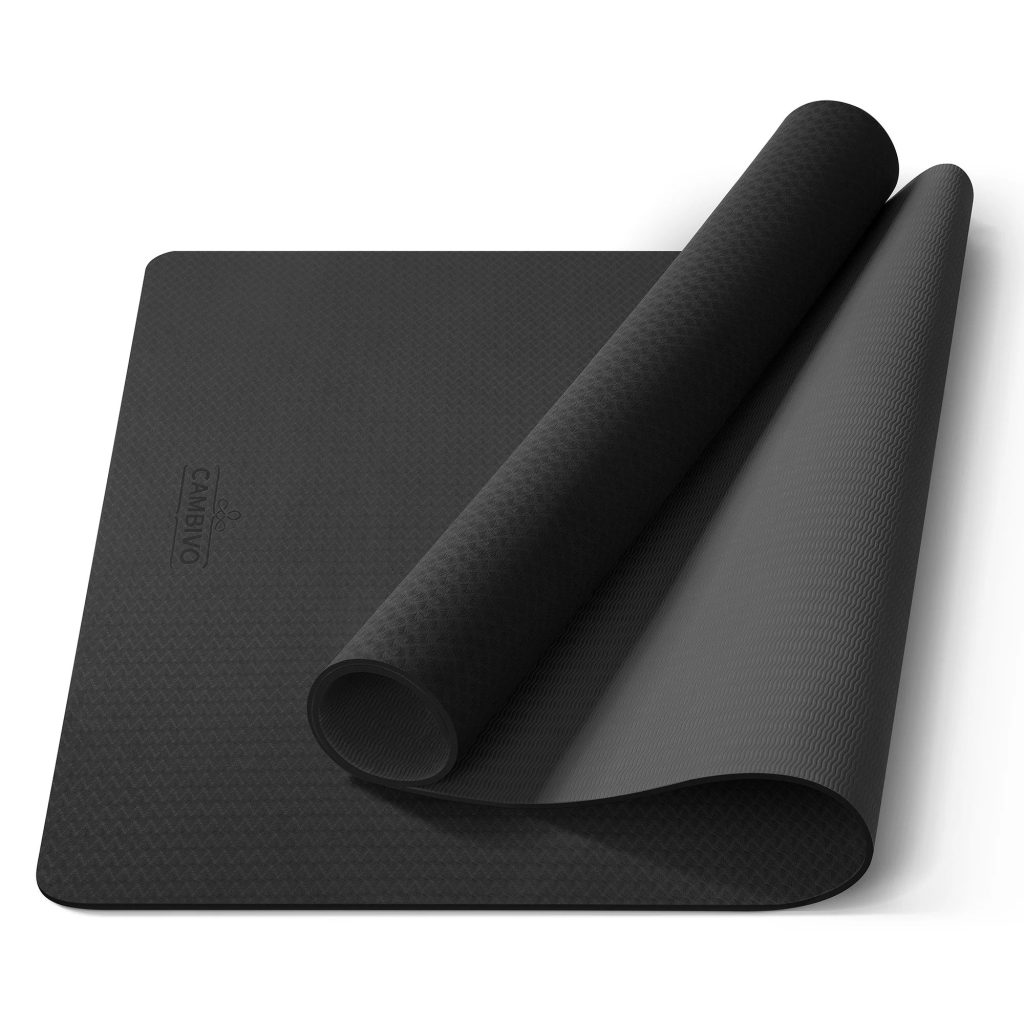
Identifying Color Fading and Material Degradation
Color fading and material degradation are key indicators that it might be time to replace your yoga mat. Watch for these signs to ensure the longevity and effectiveness of your mat during practice.
- Color Fading: Over time, UV exposure and chemicals from sweat can cause your mat’s color to fade. This isn’t just a cosmetic issue; it signals that the material may be weakening and becoming less effective.
- Material Breakdown: If your mat starts to peel, crack, or flake, these are signs of serious degradation. These symptoms can compromise the structural integrity of your mat, reducing its functionality and safety.
- Material Sensitivity: Different materials show wear differently. Rubber mats may degrade faster than synthetic ones due to their porous nature which absorbs more moisture.
Allergies and Skin Irritation: Unexpected Red Flags
Allergies and skin irritations can be major indicators that your yoga mat needs replacing. Over time, mats accumulate allergens, bacteria, and dirt from regular use, especially if not cleaned properly. This can cause unwanted allergic reactions or skin issues during your practice. Here are signs to watch for and reasons to consider replacing your mat:
- Itchy Skin/Reactions: If you start experiencing itching or other skin reactions after your sessions, it might be time for a new mat.
- Material Breakdown: Materials breaking down can release chemicals which might irritate sensitive skin.
- Odors: Persistent odors can indicate bacteria growth which could also irritate skin.
Cleaning Challenges: When Your Mat Resists Refreshment
A yoga mat needs regular cleaning to stay hygienic and grip well. Over time, mats can resist even the best cleaning efforts. Here’s when to consider a new mat:
- Deep Cleans Don’t Help: If deep cleaning doesn’t get rid of dirt and grime, it’s a sign your mat’s time is up.
- Sticky After Washing: Mats should feel fresh after a wash. If yours stays sticky, it’s not performing right.
- Bad Smells Persist: When a sour smell lingers after cleaning, bacteria may have dug too deep. Opt for a new mat.
The Impact of Mat Thickness on Your Practice
The thickness of your yoga mat significantly affects your yoga practice. Here are key points to consider:
- Comfort and Cushioning: Thicker mats provide more cushioning, making them ideal for poses that press on your joints and bones. They help prevent discomfort and injuries, particularly during kneeling or lying down poses.
- Stability for Balance: While thick mats offer cushioning, they might decrease stability for balance poses. Thinner mats, on the other hand, provide a firmer surface, which may enhance stability in standing or balance-focused poses.
- Portability: If you travel often or carry your mat frequently, a thinner mat is more lightweight and manageable. Thicker mats are heavier and may be cumbersome to transport.
- Durability: Generally, thicker mats can endure more wear and tear due to their substantial material. However, the material composition also plays a critical role in longevity.
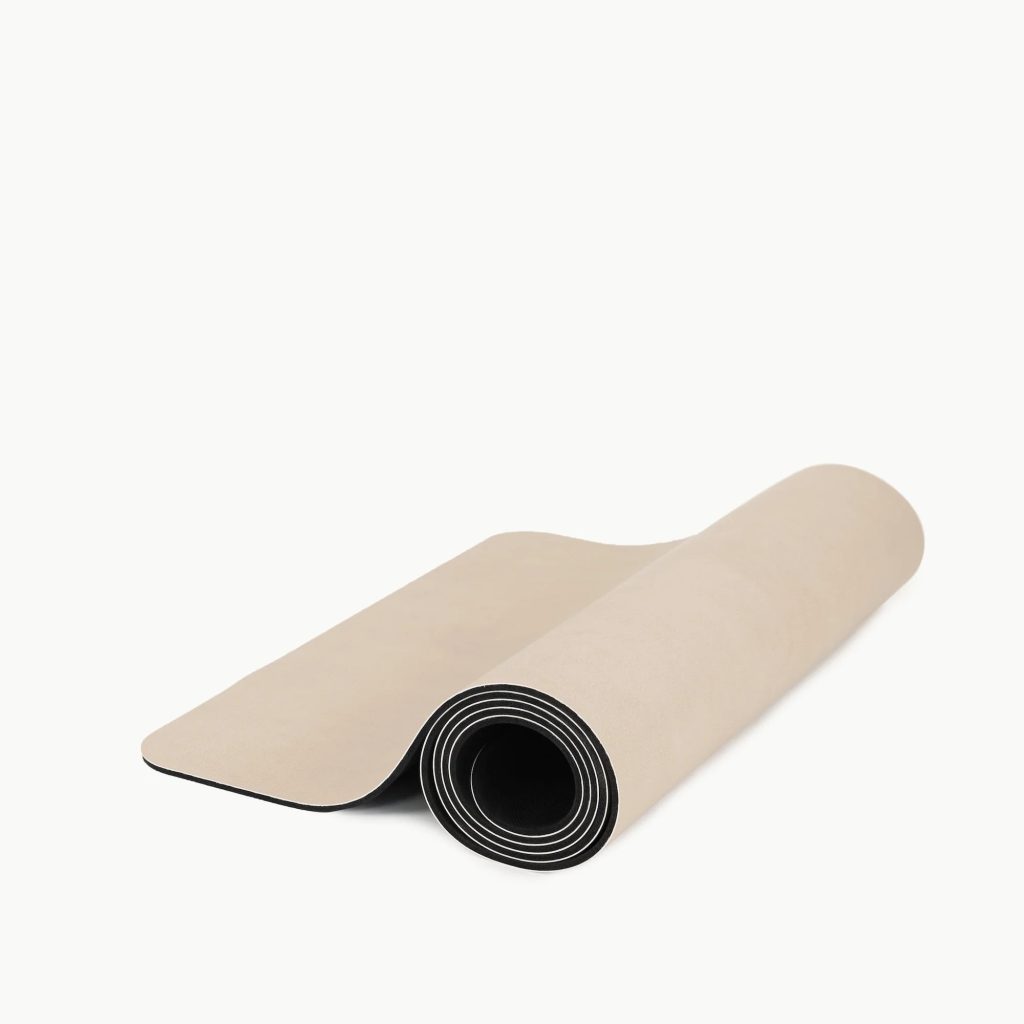
Dealing with a Deformed or Uneven Yoga Mat Surface
When your yoga mat begins to show a deformed or uneven surface, it may hinder your balance and alignment. This deformation can be due to various reasons, such as improper storage or regular wear and tear in specific areas due to repeated poses. Here’s how to address these issues and decide when it’s time for a yoga mat replacement:
- Test Stability: Place your mat on a flat surface and check if any parts are raised or sunken in. If you find any spots causing instability, it’s a sign that your mat may no longer be safe.
- Examine Surface Regularly: As you continue your practice, keep examining the surface of your mat. Noticeable changes over time can impact your practice.
- Respond to Deformation: If the deformation affects your practice, don’t wait. Replacing your mat can improve safety and comfort.
Consequences of Ignoring the Signs
Ignoring the signs that it’s time to replace your yoga mat can have several negative consequences. Here are the key issues you might face:
- Increased Risk of Injury: A worn-out mat can cause slips and falls, leading to injuries. It’s crucial to have a mat that provides stable support during your practices.
- Hygiene Problems: Old mats can harbor bacteria and fungi, posing health risks. Persistent odors and dirt are signs of contamination.
- Reduced Effectiveness of Practice: With decreased grip and cushioning, your yoga poses might not be as effective. This can hinder your progress and enjoyment of yoga.
- Potential Cost Increase: Delaying the replacement of a yoga mat might lead to higher costs. You might need more frequent purchases of related gear or pay for injury treatments.
It’s best to be proactive about replacing your yoga mat when the time comes. This ensures safety, hygiene, and the quality of your practice.
